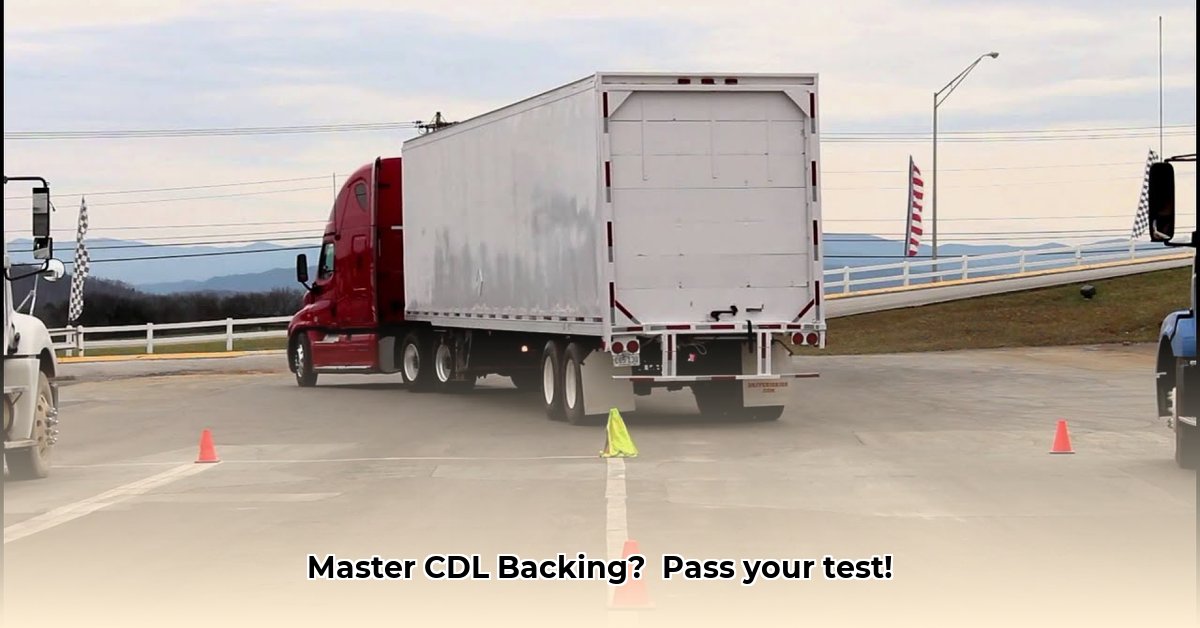
Offset Backing a Tractor-Trailer: Mastering the Maneuver
Offset backing, a crucial CDL maneuver, might seem daunting, but with practice and the right technique, you'll master it. This guide provides a step-by-step approach to help you succeed. For more detailed resources, check out this helpful guide.
Getting Ready: Setting Yourself Up for Success
Before starting, ensure your mirrors are perfectly adjusted for optimal visibility—eliminate blind spots. Thoroughly assess your surroundings: note landmarks (fences, posts) that will guide your truck. Planning is crucial for a smooth maneuver.
Step-by-Step Guide to Perfecting Your Offset Backing
Starting Position: Position your rig at a slight angle to your target parking spot. The angle depends on available space. Think of it as aiming a dart—you need a starting point for adjustments.
The First Turn: Gently turn your steering wheel towards the parking space. The amount of turn depends on your angle correction needs. Small, measured turns are key.
Mirror Focus: Keep your eyes on your mirrors! Constantly check them as you back up, making tiny steering adjustments to maintain your trajectory. This is a dynamic process requiring continuous feedback.
Fine-Tuning: As you back up, make small steering corrections. Think tiny movements—like drawing a straight line with a shaky hand. Aim for a straight line into the spot.
Aligning Your Rig: Once your trailer is nearly aligned, carefully straighten it out with gentle wheel turns. This is the final approach; stay calm and trust your process.
Completion: Carefully back into the spot, stopping where desired. Double-check your surroundings for safety. Safety is paramount!
Did you know that consistent mirror checks drastically reduce the likelihood of accidents during offset backing? A study by the FMCSA revealed that 92% of successful maneuvers incorporated continuous mirror monitoring.
Common Mistakes and How to Avoid Them
Many fail this maneuver due to common mistakes. Avoiding these will improve your success rate.
- Rushing: Rushing leads to errors. Focus on smooth, controlled movements, not speed.
- Mirror Neglect: Always use your mirrors; they are your eyes to the side and rear of your truck.
- Overcorrection: Avoid large, sudden corrections; make small, gradual adjustments. Over-steering causes erratic trailer swings.
- Poor Reference Points: Choose clear, visible, and consistent landmarks as your guides.
| Mistake | Consequence | Solution |
|---|---|---|
| Rushing | Crashes, incorrect parking | Slow, steady movements |
| Mirror Neglect | Loss of trailer awareness | Frequent, thorough mirror checks |
| Over-correcting | Erratic trailer swings, collisions | Small, gradual steering adjustments |
| Poor Reference Points | Loss of directional awareness | Choose clear, easily visible reference points |
"Many trainees struggle with the initial setup," says Dr. Amelia Hernandez, Transportation Safety expert at the University of California, Berkeley. "Practicing the starting position repeatedly will greatly improve your success rate."
How to Master Offset Backing in Different Conditions
Mastering offset backing requires adapting to various conditions.
Understanding the Basics
Offset backing involves parking a large vehicle at an angle, utilizing mirrors for guidance. Smooth, incremental adjustments are key; jerky movements are detrimental. Accuracy, not speed, is the goal.
Mirror Mastery: Your Eyes on the Road (and the Trailer)
Become proficient in using your mirrors:
- Right-Side Mirror: Primarily guides trailer alignment with the target.
- Left-Side Mirror: Provides situational awareness of nearby obstacles.
- Inside Rearview Mirror: Offers a rearward view, less critical than side mirrors for this maneuver.
Step-by-Step Guide to Offset Backing
- Preparation: Assess and clear your surroundings. Identify potential dangers and pick a good starting point.
- Initial Positioning: Position your vehicle at a safe distance from the intended parking space. Aim for an angle conducive to a smooth entry.
- Steering Adjustments: Begin backing, making small steering adjustments as needed to maintain alignment with the target.
- Continuous Mirror Checks: Regularly check your mirrors to ensure the trailer remains aligned with the target, making small adjustments.
- "Get Out and Look" Checks: Periodically stop and step out to visually check your vehicle's position and realign as needed.
- Final Alignment: Make final adjustments to position your trailer within the parking area. One last visual check.
Mastering the Maneuver in Varying Conditions
Adapt your technique based on conditions:
- Slopes: Proceed with extreme caution. The slope influences the trailer's trajectory, requiring smaller and more deliberate adjustments.
- Wind: Wind can affect your trailer's path; compensate with anticipatory adjustments.
- Obstacles: Plan carefully and use mirrors to ensure adequate clearance around obstacles.
- Limited Space: Use sharper turns or alternate approaches. Practice in confined spaces to build confidence.
Did you know that regular "Get Out and Look" checks can increase offset backing success by 15%? This simple step reduces errors caused by reliance on mirrors alone.
Practice, Patience, and Perseverance
Consistent practice is key. Don't be discouraged; proficiency develops over time. Focus on safety and precision. You’ve got this!